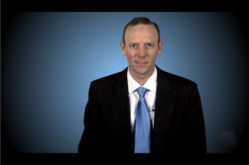Brand & Trademark Availability
In this video I’m going to answer the question: “how do I know if a brand name or a trademark is available?” Many people think that because they are able to register a name with the Secretary of State or the Corporation Commission in their state that the name is available as a brand or trademark.
Trademark Registration
A trademark is not the same as registering your business. A trademark is a word or symbol that distinguishes and identifies your business as the source of what you sell. In order to establish a trademark nationwide you must do more than merrily claim it or claim the domain name. You must register with the United States Patent & Trademark Office and use the trademark. When you apply for a trademark, the trademark office will do a search to determine if you meet the requirements for a trademark. There are two main things that they look for and these are the same things that you should look for to determine if your selected brand name is available.
Trademark Availability
First, does your trademark distinguish your brand from other brands already in use? And second, can your trademark identify your brand as a brand? To distinguish your brand, the trademark must be significantly different than other brands in use. If your trademark is similar to the way other trademarks look, sound, or create a similar impression as other trademarks, the trademark is not likely available and your application may be rejected. The prior trademarks need to be used for related products or services to what you are selling but “related” is a broad term. And your application can be rejected based on someone selling very different merchandise.
The trademark office primarily searches in the databases of current trademarks in the United States. But a trademark is not truly available if someone else is using the trademark even without a registration. If they are using the trademark prior to your use, they have at least some rights that can block you from using the trademark.
If your chosen brand name cannot distinguish your brand from others, then it’s not available. So, this is the second requirement to get a brand that you can protect with exclusive rights it must also be able to identify your brand as a brand. Your trademark must be more than generic terms for what you are selling. The trademark also cannot be merrily descriptive of your goods.
For example, crispy may be descriptive for bacon and low fat may be descriptive for yogurt. The strongest trademarks have no elements of descriptiveness in the brand name. For example Xerox or Kodak. At Inspired Ideas Solutions Law Firm we perform high quality trademark searches to determine if your chosen trademark is available not just in the trademark office database but based on registrations from all 50 states, business publications, and other databases. We help you make the determination of whether to invest time and money into building a brand around a trademark. That brand can serve your business for years to come.
By: Wayne Carroll










